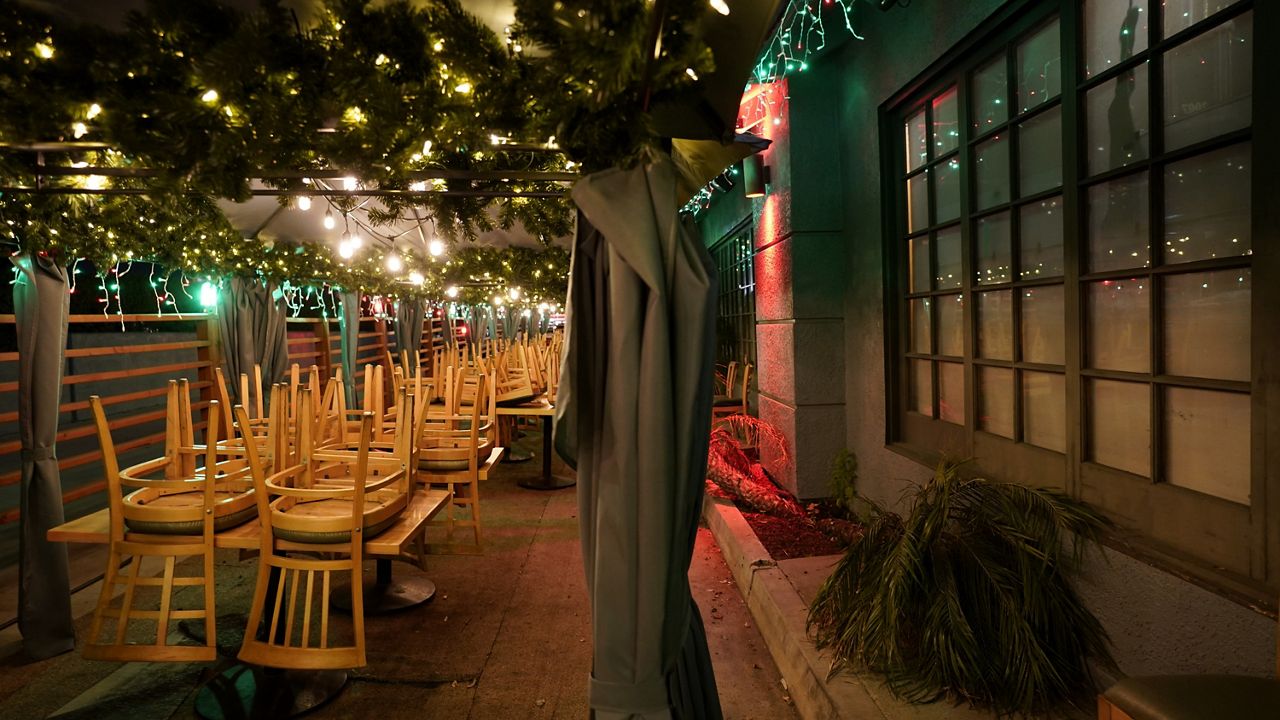MANHATTAN BEACH, Calif. — On Monday, restaurateur Allen Sanford released the results of a small local study that he hopes might make a significant impact — or, at least, causes some conversation. His study argues that the Los Angeles County Department of Public Health’s November 25 ban on outdoor dining is based on a faulty premise that doesn’t reflect the reality of dining under safe protocols.
Sanford’s study collected survey responses from 45 restaurants in Los Angeles’s South Bay, and states that, from May 1 to Dec. 1, 50 cases of COVID-19 infections have been confirmed among an approximate total of 1,440 restaurant workers, or 2.48% of workers. Of those infected, none have been hospitalized or died as a result of COVID.
Though the restaurants participating in the survey are named, the data presented by Sanford does not include the specifics of when or at what restaurants employees were working when they were diagnosed with COVID. Restaurants were promised anonymity in return for their responses. But Sanford did not include responses from restaurants whose data, he felt, he couldn't trust, or those who he felt weren't adequately adhering to County protocols.
The conclusion, the study says, is that Los Angeles County’s 81 enumerated restaurant protocols have been successful and that those rates suggest that neither restaurant staff nor customers are infecting one another.
“My goal is to get people talking, where we make decisions based on data,” Sanford said. But in bright, bold red lettering, Sanford’s infographic sums his position up: “Outdoor dining does NOT appear to be spreading COVID-19.”
Sanford’s adult life has been spent in hospitality and entertainment. He’s an owner of the Rockefeller restaurants, with locations in Manhattan Beach, Hermosa Beach, and Redondo Beach; he’s the promoter of 2019’s three-day Beachlife Festival in Redondo, which reportedly drew 27,500 concertgoers; and for more than a decade, he owned Hermosa’s Saint Rocke concert venue, though he is in the process of selling the space.
“This is not perfect data,” Sanford admits, “but you can extrapolate some things,” such as a belief that the data shows employees and customers to be safe and that the county’s protocols have worked.
The restaurants named as participants in the survey include renowned steakhouses, such as the Arthur J in Manhattan Beach, popular bars like Hermosa’s Baja Sharkeez, and high-end eateries like Gabi James and Hook and Plow in Redondo Beach.
But it’s not clear if the survey is reflective of the entire South Bay restaurant picture, much less Los Angeles County as a whole.
Sanford’s survey names 45 restaurants in the region: Three in El Segundo, three in Torrance, seven in Redondo Beach, two on the Palos Verdes peninsula, and 14 each in Manhattan Beach and Hermosa Beach.
There are approximately 150 restaurants in Manhattan Beach and Hermosa Beach combined, based on estimates from local chambers of commerce; business license records from the City of Redondo Beach indicate about 230 restaurants within city limits; and there are over 400 restaurants in Torrance, based on a city staff estimate, indicating that Sanford’s survey reports on a fraction of the South Bay’s eateries.
Further, Sanford admitted that, in his survey, he excluded data from restaurants that he believes are not following proper protocols. Restaurants should be exerting peer pressure to adhere to proper protocols, Sanford said.
When asked if excluding potential bad actors may skew the survey, Sanford said that he was seeking responses from "a subset of the largest restaurants."
“By that I mean, I’ve seen one or two operations where who knows whether people are following the rules or not … I don’t take them seriously, and I would think they’re lying about data anyway,” Sanford said. “All of the people in this are bonafide restaurateurs that I asked to be honest.”
Sanford’s greater wish, to ensure that data is not ignored in developing policy, appears to have been granted: on Tuesday, the Los Angeles Superior Court issued a tentative ruling enjoining the Department of Public Health’s indefinite ban. The ruling also states that a risk-benefit analysis must be completed before any further bans are declared.
Dr. Shira Shafir, an associate professor of epidemiology and community health sciences at UCLA’s Fielding School of Public Health, cautions that industry surveys such as Sanford’s must be taken with a grain of salt.
“We can’t make policy decisions based on industry surveys. Unfortunately, industry surveys are subject to several possible significant biases that need to be put into perspective when evaluating their results,” Shafir said. “Additionally, science depends on a rigorous process of peer-review [whereby scientists essentially check each other’s work before it is published] that is typically missing in industry surveys.”
For Sanford, this survey is just starting. He invites more restaurants to take the survey and share information — and, if it becomes “part of the conversation,” he will ask restaurants if they’re willing to shed their anonymity within the survey.



